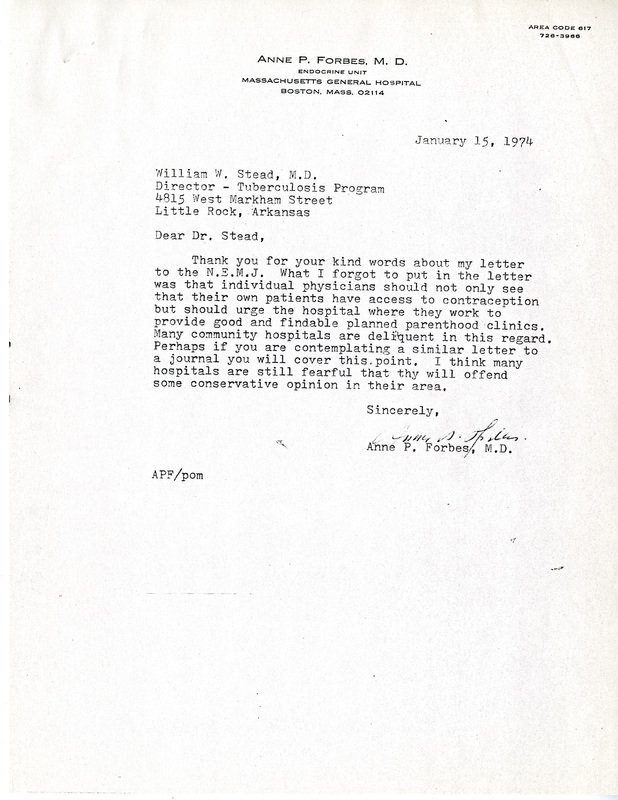Anne Pappenheimer Forbes
In 1939, Dr. Anne Pappenheimer Forbes accepted a fellowship in Dr. Fuller Albright’s endocrinology lab at Massachusetts General Hospital (MGH). This marked the start of a long collaboration with Dr. Albright that led to the discovery of the disease that bears her name, Forbes-Albright Syndrome. Not long into her career, Dr. Forbes became one of the first female members in the American Society for Clinical Investigation. Among her many accomplishments was her ovarian research, which was a key force behind the development of the Ovarian Dysfunction Clinic at MGH.
In this letter, Dr. Forbes recommended, in addition to the already standard set of screening questions, that all physicians ask their patients if they have “adequate contraceptive care”. In her practice, she had chosen to ask every female patient of reproductive age whether or not she was seeing a gynecologist because she believed offering advice or referral “is the least we can do.”
Dr. Forbes continued to champion the right to contraception by advocating that physicians take contraception access to the next level and urge the hospitals where they work to provide planned parenthood clinics.




